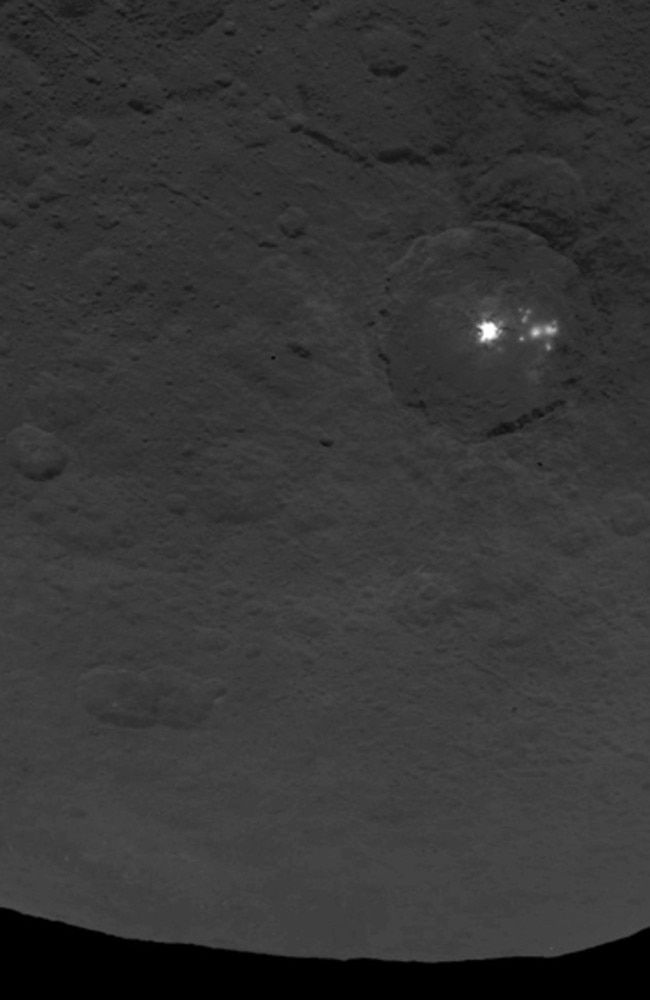Proof of life? NASA’s Dawn Mission spots bright lights on dwarf planet Ceres
A CLUSTER of bright, white spots on the surface of a distant dwarf planet has left experts scratching their heads. Is it a sign of life?
SCIENTISTS are stumped.
A cluster of bright, white spots on the surface of a “distant, dwarf planet” has left experts scratching their heads, and they can’t figure out what’s causing the planetary glow.
The spots are located on Ceres, the largest objects in our solar system’s asteroid belt, and scientists have been trying to solve the mystery for the past ten years, but to no avail.
The latest images from NASA’s Dawn spacecraft, taken earlier this month from an altitude of more than 4300 kilometres, reveal the spots are sitting in a crater that stretches approximately 90 kilometres across the arid planet, and there’s more of them than scientists initially predicted.
The biggest of the spots stretches 9 kilometres wide.

Scientists are “considering options”, but so far it is believed the light is sparked by highly reflective material, notably ice or salt.
“Dawn’s visible and infra-red mapping spectrometer allows scientists to identify specific minerals present on Ceres by looking at how light is reflected”, reads a release from NASA.
“Each mineral reflects the range of visible and infra-red-light wavelengths in a unique way, and this signature helps scientists determine the components of Ceres.”
Other theories include volcanoes, or geysers, a rare kind of hot spring that send jets of water into the air upon eruption.
“The surface of Ceres has revealed many interesting and unique features,” said Carol Raymond, deputy principal investigator for the Dawn mission, based at NASA’s Jet Propulsion Laboratory in Pasadena, California.
“For example, icy moons in the outer solar system have craters with central pits, but on Ceres central pits in large craters are much more common. These and other features will allow us to understand the inner structure of Ceres that we cannot sense directly.”

Dawn is NASA’s first mission of its kind to visit a “dwarf planet”, a celestial body that resembles a small planet but which lacks criteria to be classified as such.
It arrived at Ceres, the largest object in the main asteroid belt between Mars and Jupiter, on March 6, 2015, according to NASA.
Along with the bright lights, Dawn spotted a steep mountain slope that rises five kilometres above Cere’s surface.
Scientists hope to find more clues to the mystery of Cere’s when Dawn moves closer to the dwarf planet — from an altitude of 4345 kilometres to just 1450 kilometres — on June 30.
But it won’t get there until early August.
Until then, the mystery remains.
-youngma@news.com.au





